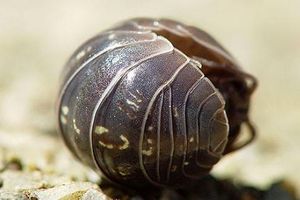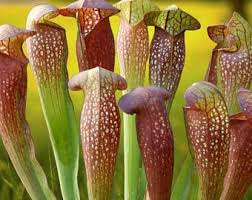Detritivores
Definition
Detritivore's are heterotrophic Organisms that feed off of decaying plant and animal matter. Organisms that feed on detritus (decaying plant or animal matter, or feces). Detritivores may also obtain nutrition by coprophagy, which is a feeding strategy involving the consumption of feces.
In Ecology
In ecology detritivores are scavengers that feed of other organisms in the environment that have died. Since detritivores are decomposers they are typically on the lower end of the food chain and are also prey for animals higher on the food chain. Detritivores play the role of recyclers in ecosystems taking nutrients from decaying organisms and reintroducing it into the environment by being eaten by other organisms. The relationship between predators and detritivores is closely linked to plant biomass in certain biomes. Typically the more predators the lower the plant biomass because the predators are eating the detritivores who help facilitate plant growth by recycling nutrients, especially nitrogen, back into the soil.
Types of Detritivores
Annelids - Earth worms are one of the most common groups of detritivores. They consume dead organic matter as well as the dirt surrounding it, recycling it back into the soil.

Fungi - Fungi are actually not considered to be detritivores. Even though they fill the same roles as detritivores they are only considered decomposers.
Bacteria - Bacteria, like fungi, are also not considered to be detritivores even though they fulfill almost the same roles as detritivores. The only marked difference between detritivores and decomposers like fungi and bacteria are that fungi and bacteria are capable of digesting lignin while other organisms that are classified as detritivores cannot.
Isopods - Some isopods are detritivores that feed on the bottom of fallen trees.

Pitcher Plants - These plants evolved from carnivorous plants to have a pitcher like shape that collects and breaks down leaf litter that falls into them.
Nitrogen Fixation
Detritivores play a major role in the nitrogen cycle allowing organic matter that normally would go to waste re-enter the food chain. Detritivores break down nitrates and nitrites from the organic material they consume and release it back into the atmosphere as nitrogen gas. This process is called the Decomposition Reaction and is often only achieved through the aid of detritivores and decomposers. Detritivores also create ammonia during the decomposition of organic matter. The ammonia produced by detritivores is used in the nitrification process to keep nitrogen in the biosphere.
References
1. Thompson, J. N., and D. M. Gates. 2018, March 30. Biosphere. Encyclopædia Britannica, inc. https://www.britannica.com/science/biosphere/The-nitrogen-cycle.
2. THE NITROGEN CYCLE. (n.d.). . http://www.scienceclarified.com/everyday/Real-Life-Chemistry-Vol-8/The-Nitrogen-Cycle.html.
3. Megías, A. G., and C. Müller. 2010. Root herbivores and detritivores shape above-ground multitrophic assemblage through plant-mediated effects. Journal of Animal Ecology.
4. Wu, X., J. N. Griffin, and S. Sun. 2013. Cascading effects of predator-detritivore interactions depend on environmental context in a Tibetan alpine meadow. Journal of Animal Ecology 83:546–556.
5. (n.d.). . Study.com. https://study.com/academy/lesson/detritivores-definition-examples.html.
6. GCSE Bitesize: Decay processes. (n.d.). . BBC. http://www.bbc.co.uk/schools/gcsebitesize/science/add_ocr_gateway/green_world/decayrev1.shtml.
